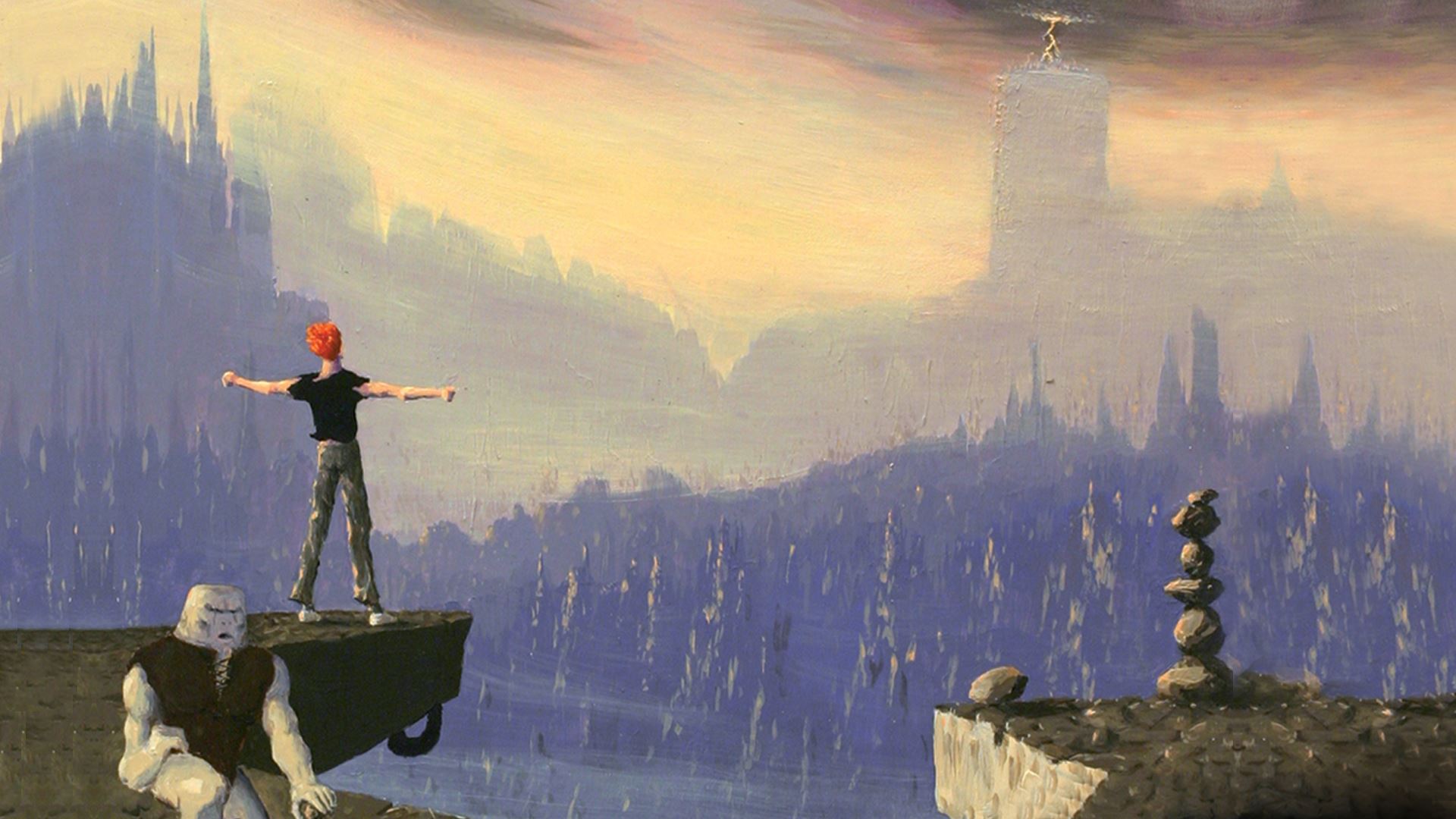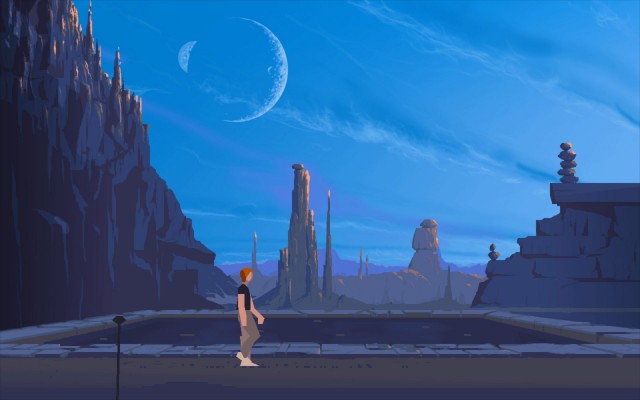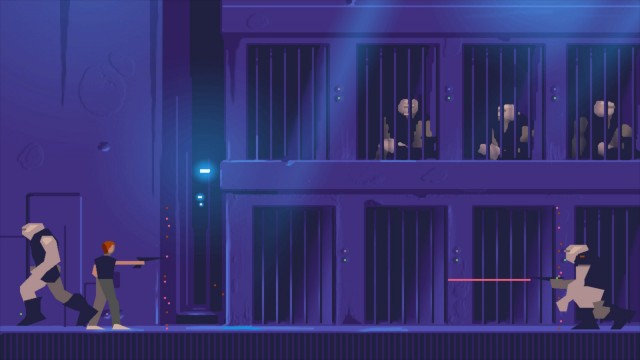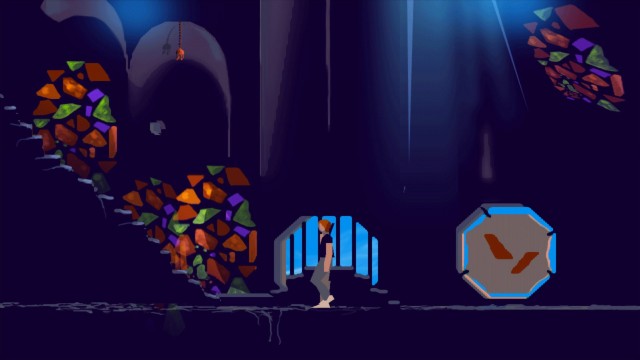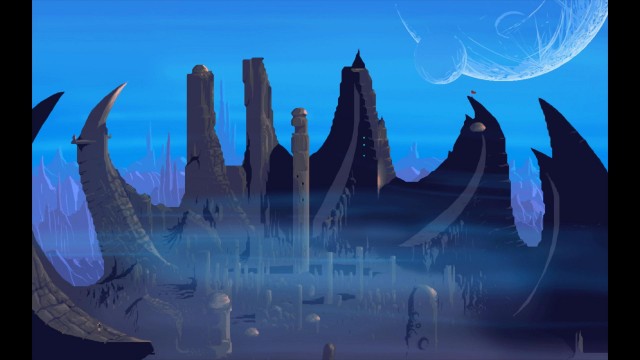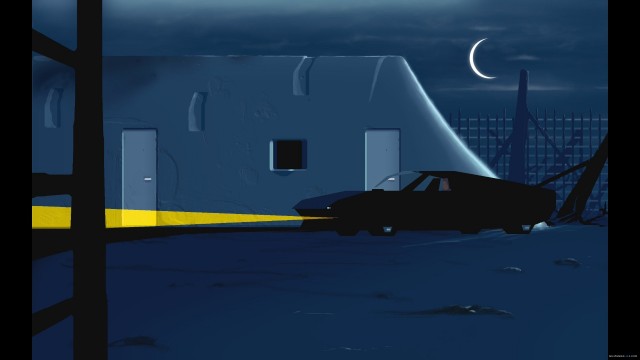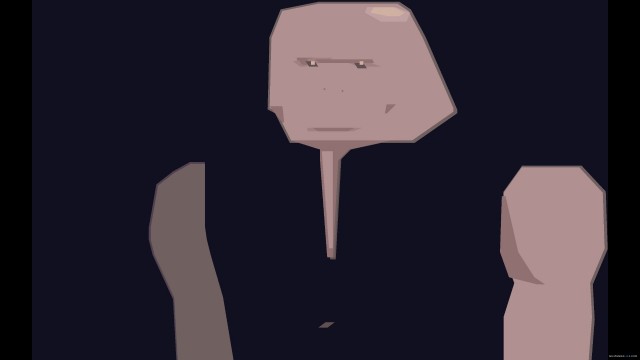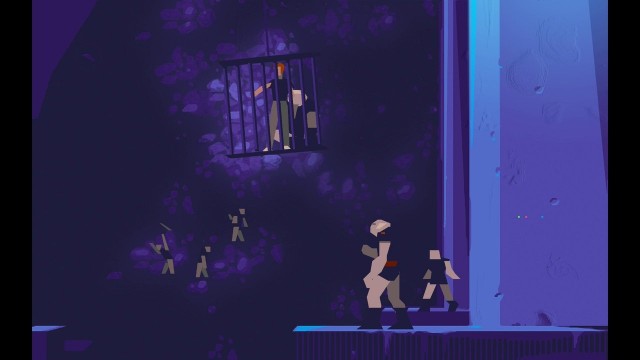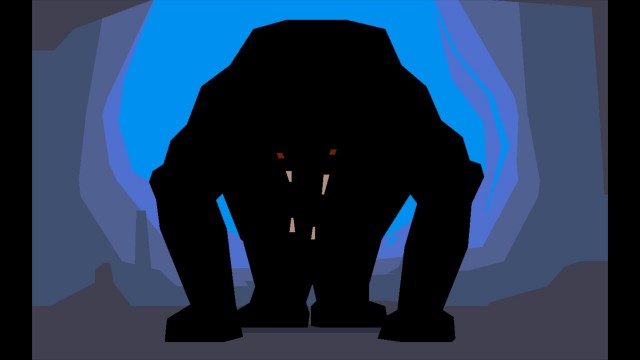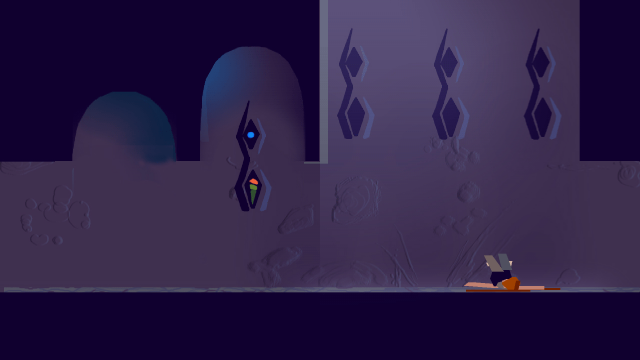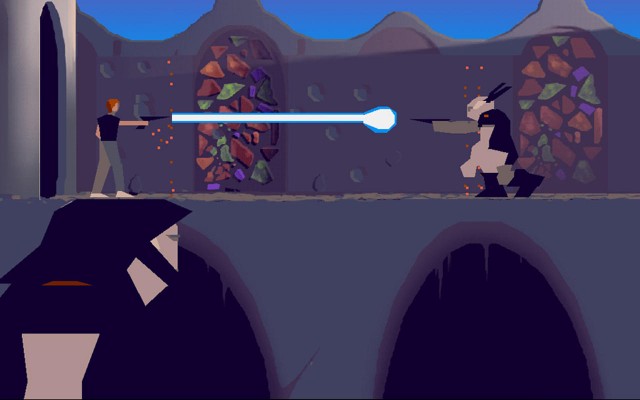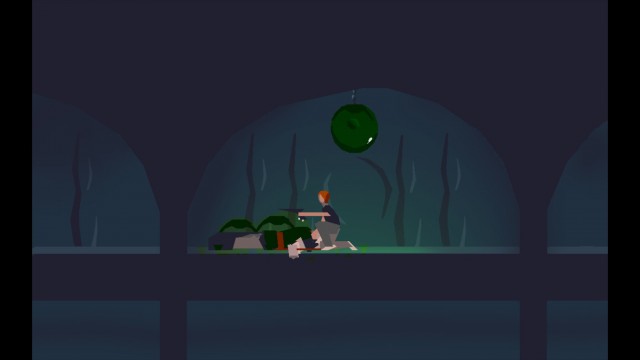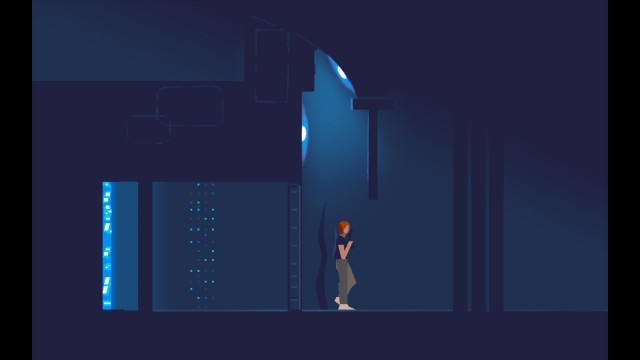Back in 1991, programmer, Eric Chahi single-handedly created and released Another World, one of the earliest forerunners of cinematic gameplay, for home computers of the era. While primarily known for its original Amiga build, Another World also released for the Atari ST, Apple IIG, and DOS, among other computer platforms, before receiving home console ports for both the Super NES and Sega Genesis.
Despite its widespread releases and Chahi’s incredible development feat in a time before indie game development properly existed, critics of the time weren’t really sure what to make of Another World, which ended up releasing in North America as Out of this World. Nonetheless, it has endured as a landmark classic of the 16-bit era, standing alongside other rotoscope-style platformers of the time such as Prince of Persia and Flashback.
The game is so beloved in fact, that it ended up seeing both a 15th anniversary remake and 20th anniversary remake, with the 20th anniversary remake first launching on iOS in time for the actual anniversary in 2011, before expanding to Android in 2012, then PC and Mac in 2013. Now, in 2014, the game has finally debuted on current consoles and handhelds as well. Better late than never, right?
With such celebrated mobile and computer incarnations however, does Another World: 20th Anniversary Edition hold up on dedicated gaming platforms? Well, yes, but mainly to those who are signing off on the fact that Chahi and his development allies at The Digital Lounge haven’t really changed the core game since 1991, rotoscope-style controls and all.
If you’re willing to appreciate a classic for what it is, warts and all, then Another World: 20th Anniversary Edition is worth the modest asking price, particularly on PlayStation platforms, where it’s a cross-buy offering. Its brevity, difficulty and obtuse trial-and-error gameplay make no effort to accommodate a modern audience though, so you’d better truly be prepared to go back to the past!
Another World: 20th Anniversary Edition is still proudly boasting the same visuals it wore in 1991 for the most part, though Chahi and his team have given a slightly fresher coat of paint to the graphics. A very slight one at that.
Essentially, Another World: 20th Anniversary Edition smooths over the jagged edges, cleans up the stray pixels and improves the resolution of the vintage graphics from its original build. At the touch of a button, you can play with the classic graphics or remastered graphics at any time, which is a very nice addition to the re-release, and serves to highlight just how visually ambitious Another World was back in the early 90’s. Sure, the game still looks like a product of 1991, but at least it took the opportunity to add a bit of polish without fundamentally altering the charm of the original 16-bit graphics.
Regardless of which platform you play it on, Another World: 20th Anniversary Edition animates cleanly and performs well, particularly if you opt for the smoother remastered graphics. The console versions obviously carry a bit more resolution and detail than their handheld counterparts, but there isn’t that much of a difference between platforms.
This is true even of different console generations as well. While there’s no Xbox 360 version, Another World: 20th Anniversary Edition was ported to PS3 as well as PS4, though you’d be hard-pressed to tell which platform was which if you ran the two generations of Sony’s consoles side-by-side. Likewise, there’s nothing to differentiate the visuals of the PS4 and Xbox One versions of the game, though the PS4 version edges out for other reasons, namely because it features cross-buy and Remote Play. Even then however, the game looks pretty well identical on the lesser-powered Wii U as it does on PS4, Xbox One and PC/Mac, even when played on the Wii U Gamepad screen.
On handhelds, Another World: 20th Anniversary Edition is more compressed and akin to its mobile builds’ graphics, but still presents largely the same caliber of visuals. The PS Vita version more noticeably wins out here though, even putting its obvious cross-buy incentive aside, since it has noticeably improved resolution over its 3DS counterpart. That’s before you consider the 3DS version not having any 3D effects at all, nor any real use of the dual screens, making it come across as a lazy port.
All things considered though, Another World: 20th Anniversary Edition isn’t a game that one plays for the graphics. It’s a game that carries itself on retro charm, and that also comes through in the intentionally archaic-looking visuals.
Another World: 20th Anniversary Edition allows you to toggle the audio just as it does the graphics. You are given three options, which include the classic soundtrack from the original releases, the classic soundtrack with the touch-ups done in the CD-enabled vintage releases, and an all-new remastered soundtrack made for the 20th Anniversary re-release. The remastered score is just as impressive as the vintage score, and either way, Another World: 20th Anniversary Edition sounds impressively immersive and atmospheric.
Again, you can only expect so much from the audio, considering that this is a game from 1991, but for its time, this game was something remarkably different for video gaming sound. Its understated score plays amidst the ambience of a hostile alien landscape, while the sharp sounds of flying lasers and manifesting energy shields add a visceral edge to what’s otherwise somewhat rigid combat.
The only element of the audio that hasn’t totally held up are the occasional vocal exclamations by your character and especially the aliens, which sound oddly muted and undeniably goofy by today’s standards. In what’s supposed to be an immersive and gripping game, it can break the illusion when you snicker at the ludicrous sound of an alien falling to its death with what can only be described as a drunken cry.
With that said, Another World: 20th Anniversary Edition remains mostly impressive from an audio standpoint. It still can’t hold a candle to a Dolby 5.1-powered modern adventure game, but for 1991, this was very impressive work!
Another World: 20th Anniversary Edition is part platformer, part puzzle game and part adventure game. For its time, it was a very interesting beast indeed.
Players control Lester Knight Chaykin, a scientist who has accidentally zapped himself into a weird alien landscape. From there, players simply have to survive and try to find their way home, with the help of Buddy, one of the imprisoned locals, as both of you are hunted by some rather unfriendly alien creatures.
Just like in 1991, Another World: 20th Anniversary Edition simply drops you into a strange, hostile landscape, and gives you no direction or hints whatsoever at any point. You have to survive on your own wits and resourcefulness, while also challenging yourself to get used to the rigid rotoscope-style controls. It makes for the rewarding sense of conquering a game that doesn’t hold your hand, though the obtuse presentation of Another World: 20th Anniversary Edition will merely aggravate impatient players, who had best bring a walkthrough.
Thankfully, Another World: 20th Anniversary Edition adds in adjustable difficulty, allowing you to play on Easy, Normal or Hard settings, which mildly affects the intelligence of enemy aliens, and seems to dictate how long protective shields last.
Managing offense and defense with your weapon is an interesting way that Another World: 20th Anniversary Edition stands apart from the pack as well. You can mash an attack button to fire ordinary lasers, hold the button down for a split second and release it to create a protective energy shield, or hold the button down for a longer period of time and release it to shoot an extra powerful energy blast that destroys scenery and instantly obliterates enemy shields.
While many rotoscope-style games suffer from tedious, fussy combat, Another World: 20th Anniversary Edition feels significantly more engaging and interesting thanks to this mechanic. Even on the Easy setting, you’ll have to master the controls quickly, erecting shields and positioning Lester at just the right position to take down enemies through your own defenses before they can vaporize you in turn, which they will do readily and with extreme prejudice fairly often. Even if you’ll die a lot however, you can instantly respawn at a checkpoint with the tap of a button, and have infinite lives in the re-release, which is great!
The only platforms that the combat can be a little more problematic on are iOS and Android, since the touch controls don’t always respond the way they’re supposed to during heated combat scenarios. Even on consoles and handhelds, Another World: 20th Anniversary Edition will occasionally glitch when it comes to both movement and combat, occasionally leading to Lester dying because an enemy shot through his shield somehow, or he was deemed to have stood on a trap that he was actually clearly away from. It’s not common, but it is annoying when it does happen, especially given that the checkpoint placement can be a little finnicky, depending on which order you accomplish key objectives in.
Occasionally exacerbating the issue of cheap deaths is the rather odd controls, which sometimes feel a little too stuck in 1991. The fact that you run and shoot with the same button for example is something that really should have been separated in the modern re-release of the game. This is especially true when you see that the two adjacent face buttons both jump (i.e. Y and A on Nintendo platforms, Square and Circle on PlayStation platforms, and X and B on Xbox One), which just seems strange when The Digital Lounge could have used one of these buttons for running and/or shooting independently. That’s before the expected headaches with the rigid rotoscope-style movement as well, which dictates that Lester generate running momentum for long jumps, and move along a sort of invisible horizontal grid, without precision control over one’s steps and leaps.
If you know what you’re doing though, Another World: 20th Anniversary Edition remains a rewarding adventure, even if veteran players can shoot through it in around two hours flat. If you’ve never played the game before, you might be able to stretch that to four or five hours, especially on a higher difficulty, though once you beat the game, you’re done with it. The PlayStation, Xbox and Steam builds present achievements/trophies to try and fetch, but you’ll get most of them just by playing through the game normally, and the rest by doing some very simple tasks via Chapter Select if you missed them the first time. Still, if you’re an achievement/trophy hunter, it makes for some easy ways to line your accolades further.
This however does present a knock against the Nintendo builds of Another World: 20th Anniversary Edition, which are devoid of achievements/trophies to earn, and have even less replay incentive as a result. This is on top of the unfortunate reality that both the 3DS and Wii U versions of the game feel a bit lazily developed if I’m being honest. The 3DS version is at least portable, but it makes no effort to take advantage of the handheld’s suite of features at all, including the 3D capability! The Wii U version at least supports off-TV play on the Wii U Gamepad, but it doesn’t support any other controllers beyond the Wii U Gamepad itself, which is functional, but doesn’t feel ideal. It really makes it evident that Another World: 20th Anniversary Edition just isn’t well-optimized to Nintendo platforms, even if the game is at least playable on both of them.
Out of the many versions of the game, it seems that the PlayStation versions turned out the best, having both cross-buy and cross-save capability, and just having the game feel the most intuitive and suited for the PS4 controller especially. The PS Vita version lacks touch control in the menus, which seems like a lazy omission that continues to suggest lesser optimization on Sony’s handheld, but at least the PS Vita version plays just as well as its PS3 and PS4 siblings, and is arguably the best of the portable renditions.
The Xbox One version is still perfectly well-realized, mind you, even if its controls can sometimes feel a bit less comfortable compared to the PlayStation versions. It’s still better than the decent, but unreliable touch controls in the iOS and Android versions though, or trying to play with a keyboard on PC or Mac. Thankfully, PC/Mac gamers do have the ability to plug in a gamepad though, which makes for a more pleasant and reliable experience.
On any platform though, Another World: 20th Anniversary Edition harkens back to a simpler time. Victory is hard-earned, death is around every corner, and there’s a lot of trial-and-error involved every step of the way. Not every element of the gameplay may have held up perfectly in contrast to modern experiences (in fact, many are firmly stuck in the past), but if you’re intentionally seeking a pure, untainted return to yesteryear, Another World: 20th Anniversary Edition is a reverent re-release that keeps the gameplay appeal of the original intact, for better or worse.
Another World: 20th Anniversary Edition, like its inspiration, is completely devoid of dialogue and actual storytelling. Instead, an alien language is the only communication between characters in the game, with Lester himself being entirely silent. Thus, it’s up to players to fill in the blanks with their own imaginations.
Sure, the premise of a scientist being transported to an alien world after an experiment goes awry is a simple one, but for the time, the emphasis on cinematic immersion was something unprecedented for video games. The ending is of particular note, being one of the first open-ended and interpretive video game conclusions, one that has been left reverently intact in the 20th Anniversary re-release.
You don’t get many answers with the story of Another World: 20th Anniversary Edition, but you’re not really supposed to. It’s a game that challenges players to use their imaginations and come up with their own answers. Maybe that will frustrate some, but to those willing to appreciate what Another World: 20th Anniversary Edition is trying to do, it makes for a storytelling technique that has largely been abandoned in many of today’s hyper-detailed games and virtual worlds.
Even compared to other indie games, Another World: 20th Anniversary Edition demonstrates artistic storytelling done right, even if it probably feels more rudimentary now than it did in 1991.
Another World: 20th Anniversary Edition wears its retro appeal like a badge, and it makes no effort to accommodate those who don’t have the patience for it, nor those who aren’t willing to appreciate it for what it is. Its paltry asking price won’t set you back much if you’re willing to keep an open mind about a game that hasn’t bothered to update itself properly in over two decades, though you should also be aware that the game is rather short-lived, presenting no real reason to go back and revisit it beyond the love of simply replaying it.
The mobile versions are cheap and portable, though touch controls aren’t really ideal when you can use an actual button scheme on other platforms. The PC and Mac versions are currently the most expensive unfortunately, commanding a $9.99 price, making them a bit less recommendable if you own dedicated gaming platforms, especially with no technical bump or other incentive to those who enjoy gaming on their computers most.
If you can, get any of the PlayStation builds, since they’re the best deal, giving you three versions of the game for just $7.99 (one of which is portable), and packing in especially comfortable controls, along with valuable trophies that you can earn for minimal effort, so long as you can handle the game’s innate difficulty. The Xbox One version still presents a solid rendition of the game for the same price, and is a good backup for Xbox loyalists, particularly since it presents an equally easy 1,000 Gamerscore worth of achievements to attain. I’d only invest in the 3DS or Wii U versions if you’re a strict Nintendo gamer that only owns those platforms however, and are actively interested in a game like this. The Nintendo builds are less impressive versions with the least replay incentive and optimization, even if the off-TV play in the Wii U version may still be attractive to those who enjoy this platform-specific feature.
Regardless of your platform of choice however, Another World: 20th Anniversary Edition is a loving re-release that will elate the nostalgic and connoisseurs of retro gaming, even if its appeal is exclusively limited to them. It’s a fleeting and sometimes punishing experience, but it’s a weird, wonderful odyssey that still deserves to be celebrated by those willing to appreciate it.

